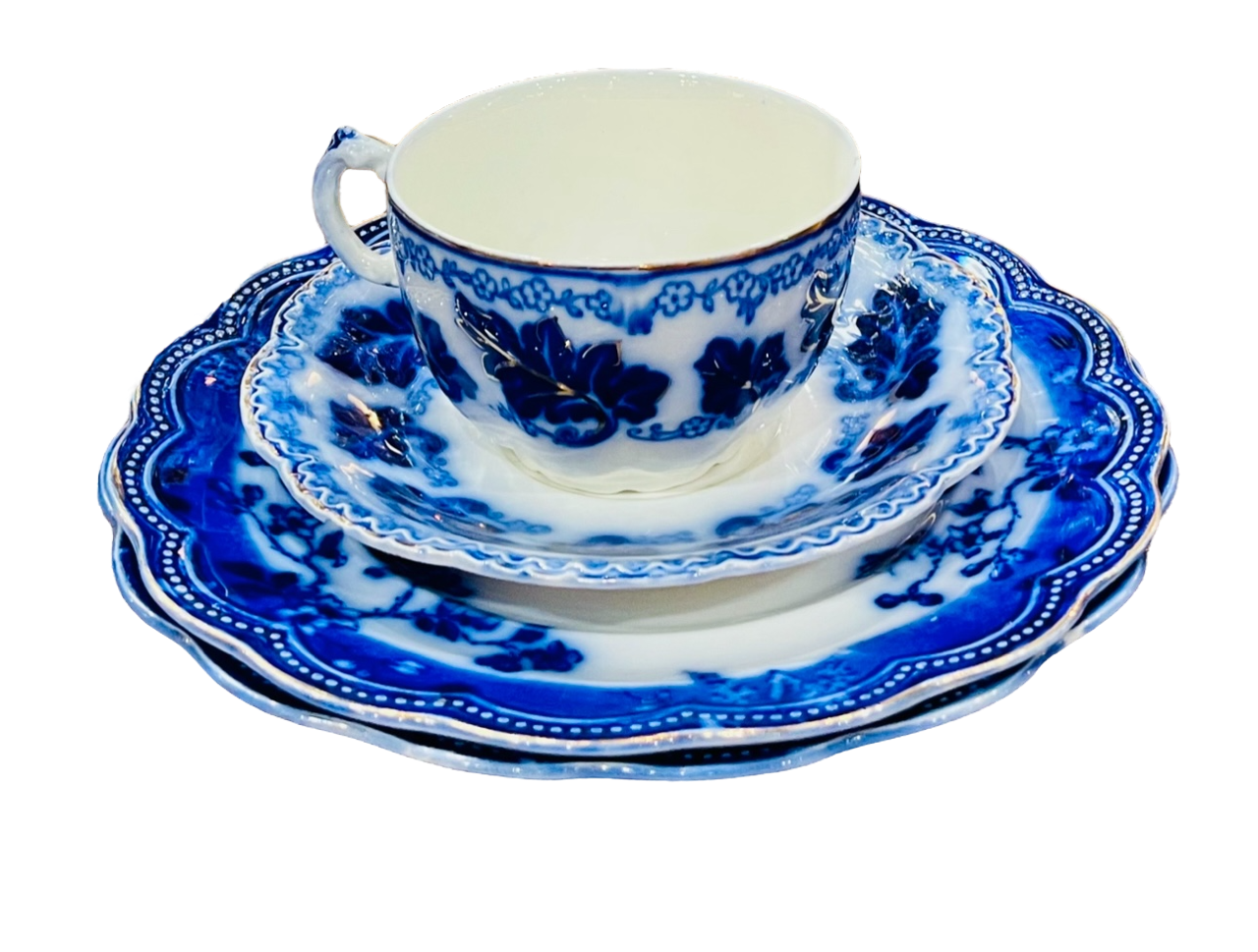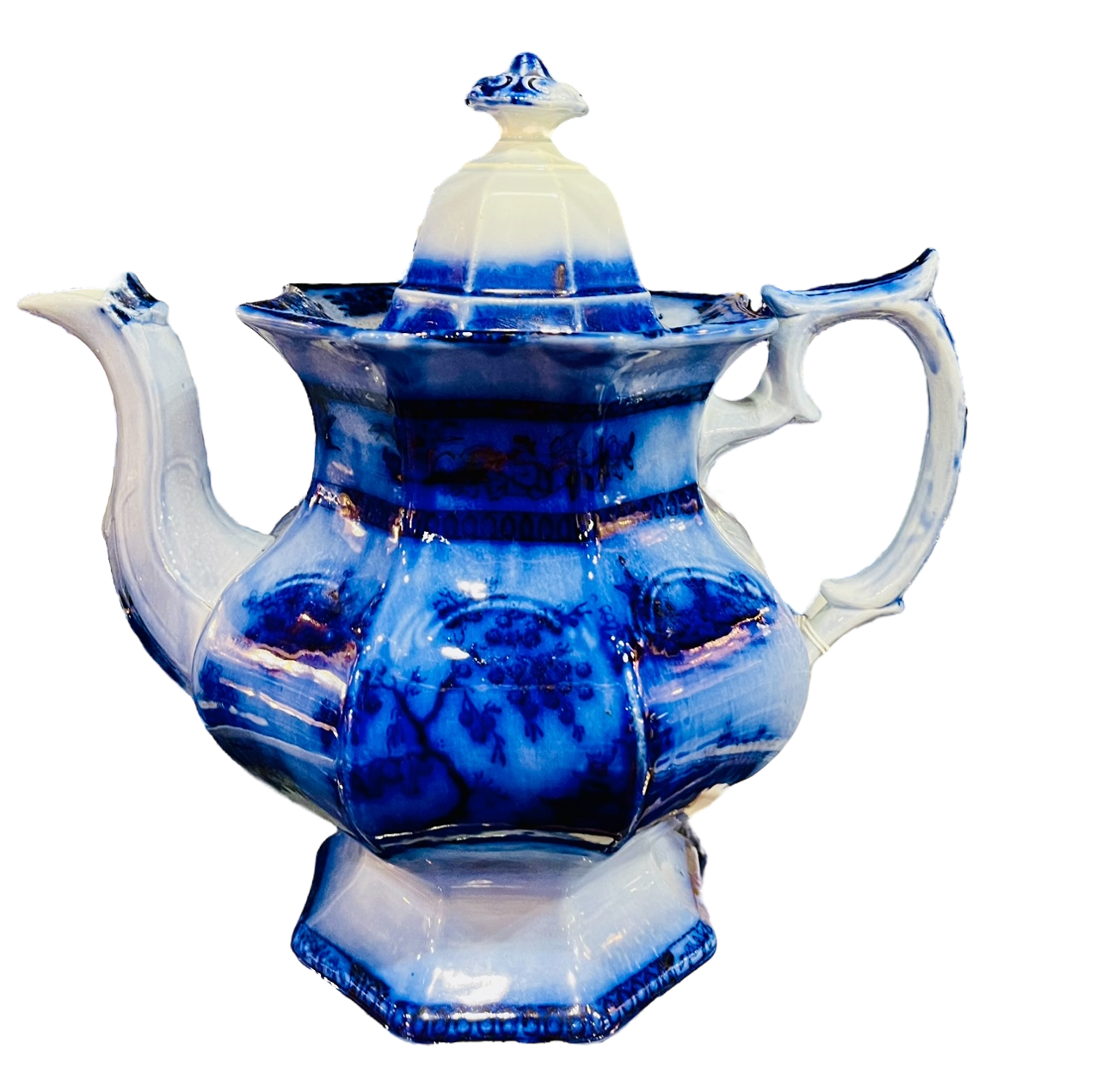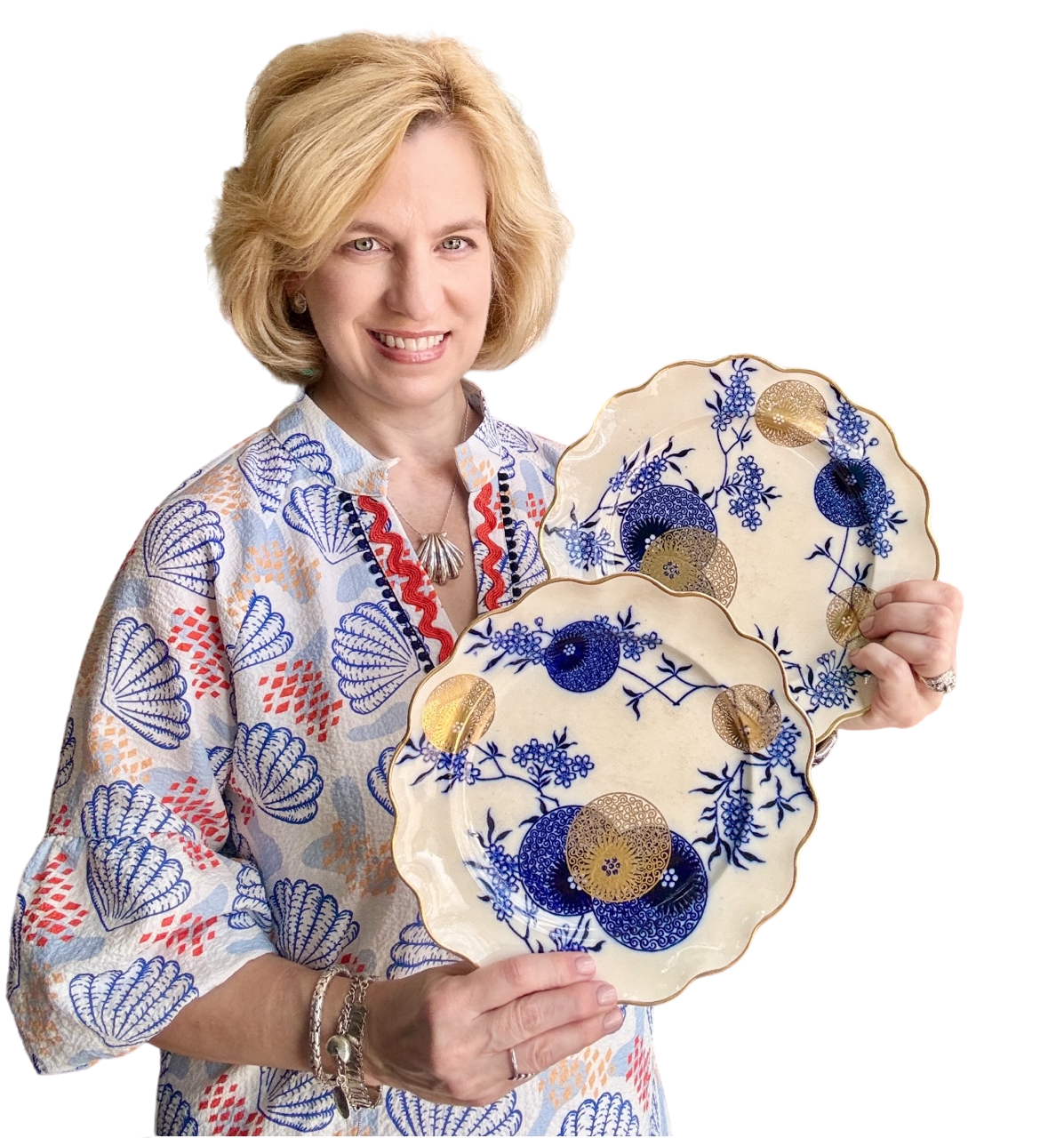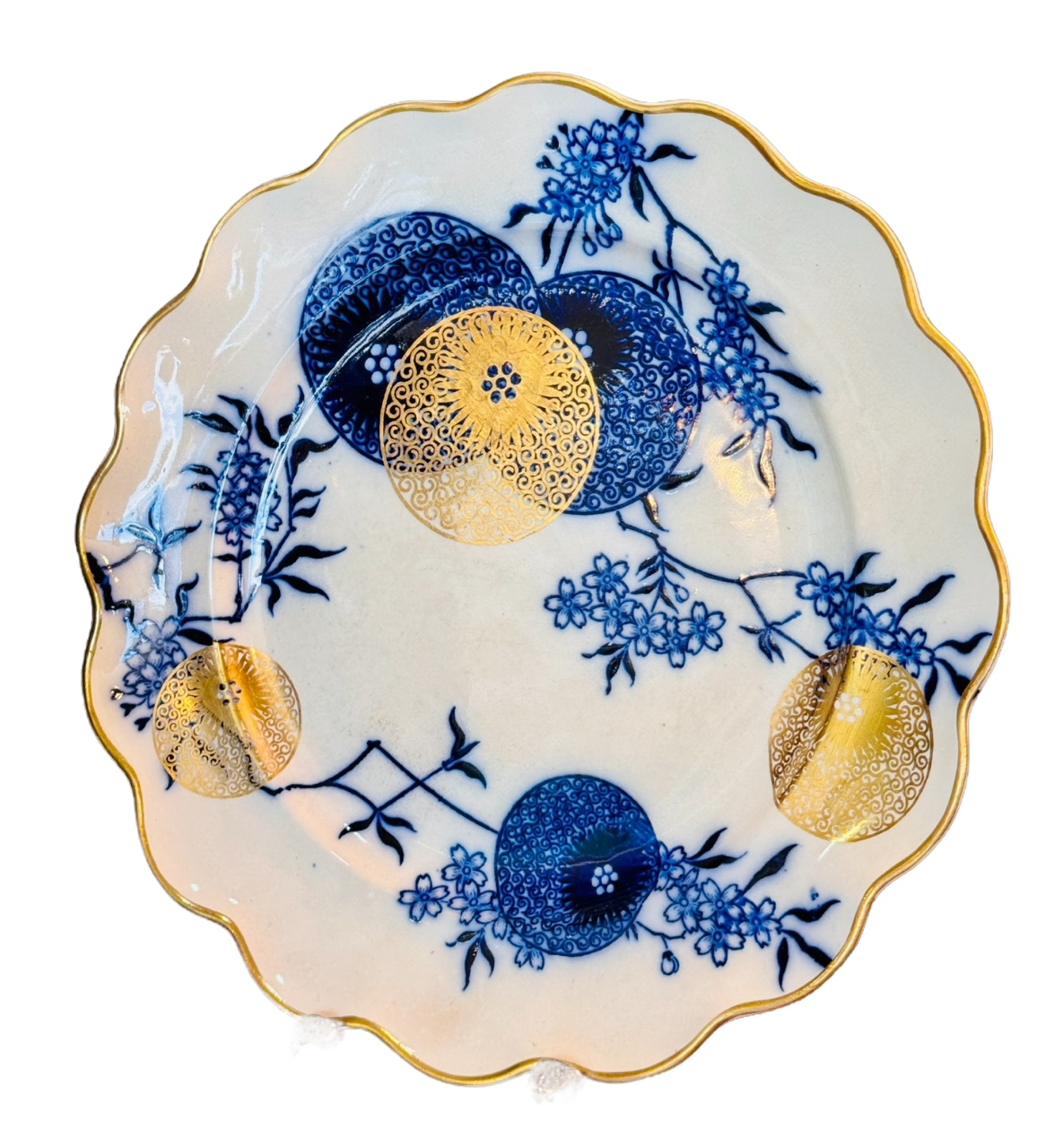The Enduring Charm of Flow Blue: A Journey Through History
The Enduring Charm of Flow Blue: A Journey Through History
Flow blue pottery, a captivating style of earthenware and porcelain, traces its origins to the Regency era of the 1820s in England. Born among the innovative Staffordshire potters, this distinctive ceramic style owes its name to the mesmerizing blue glaze that blurred or "flowed" during the firing process. This unique effect, originally an attempt by English artisans to replicate the elegance of Chinese porcelain, has since become a hallmark of timeless beauty and craftsmanship.
Early Victorian Example
The Early Days: Regency to Early Victorian (1835–1860)
Flow blue pottery gained traction in the early Victorian period, reflecting the era's fascination with exoticism and romanticized imagery. During this time, patterns often featured chinoiserie designs—intricate scenes inspired by Chinese art—and idyllic landscapes that transported viewers to faraway places. These motifs, combined with the signature flowing glaze, made each piece a work of art, sought after by households eager to bring a touch of sophistication to their dining tables and decor.
Transition and Innovation: Middle Victorian (1860–1870)
As the Victorian era progressed, flow blue designs evolved to incorporate floral patterns and Japanese influences. This period marked a shift toward more naturalistic themes, with stylized blossoms and organic motifs adorning the pottery. The popularity of Japanese aesthetics, which had begun to permeate Western art and design following Japan's opening to the West, added a fresh and modern appeal to flow blue pieces.
The Artistic Flourish: Late Victorian to Early 20th Century (1880–Early 1900s)
By the late Victorian period, flow blue pottery embraced the artistic movements of the time, particularly Japanese and Art Nouveau influences. Designs became more sophisticated, often characterized by asymmetry, curving lines, and an increased use of white space, giving the pieces a lighter, more elegant appearance. These stylistic changes aligned with the broader trends in decorative arts, appealing to a new generation of collectors and connoisseurs.
Rise, Decline, and Revival
Flow blue enjoyed widespread popularity from its inception through the early 20th century. However, the upheaval of World War I and changing tastes led to a decline in its production and appeal. Fortunately, flow blue experienced a revival in the 1890s and early 1900s, driven by a renewed appreciation for its artistry and historical significance.
Today, flow blue pottery remains highly collectible, cherished for its rich history, intricate designs, and the ethereal beauty of its flowing glaze. Whether displayed in a cabinet or used as functional tableware, these pieces offer a glimpse into the craftsmanship and artistic innovation of a bygone era.
Collecting Flow Blue: A Timeless Pursuit
For collectors and enthusiasts, flow blue pottery represents more than just decorative items—it is a tangible connection to history and artistry. Each piece tells a story of the cultural trends and artistic influences of its time, making it a meaningful addition to any collection. From the romantic chinoiserie scenes of the early Victorian period to the graceful Art Nouveau designs of the late 19th century, flow blue continues to captivate with its enduring charm.







